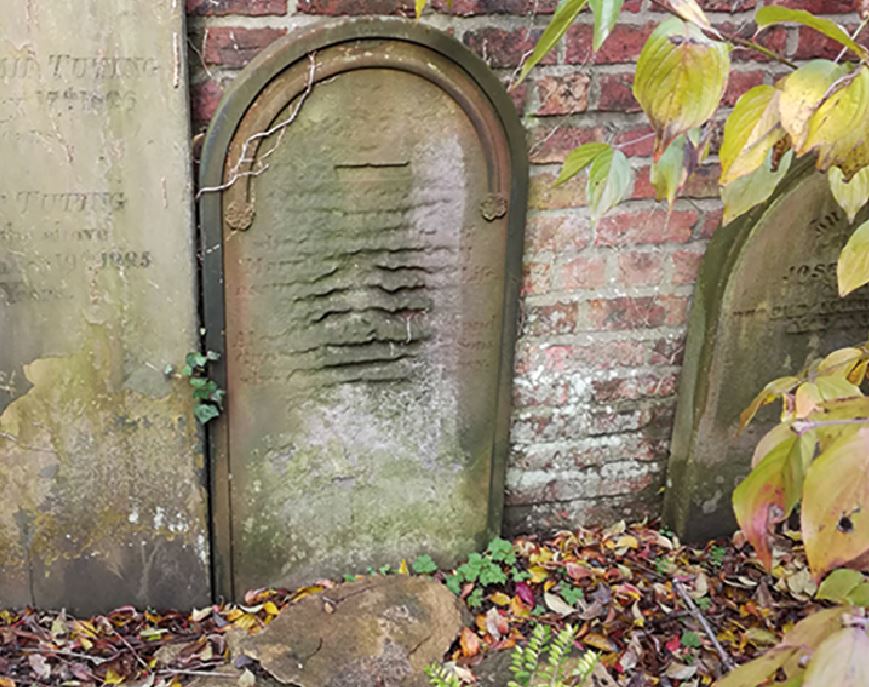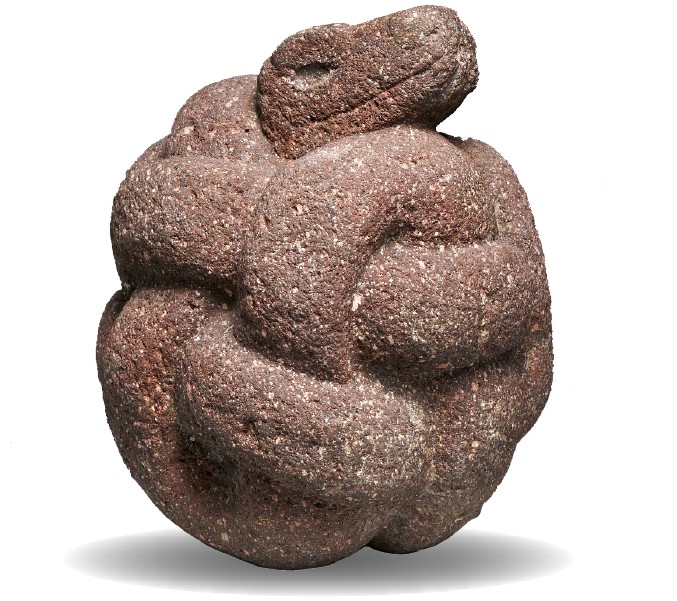When Adam and Eve sinned, death entered the world (Genesis 3:19). Notice that death was introduced into the world as a punishment. It was a curse and not a blessing. To argue otherwise, as philosophers and priests have tried to do for thousands of years, is to claim with the serpent ‘You will not surely die’ (v. 4): the first and greatest lie. Death is not the threshold of another life. It is ugly, wretched and final, a dissolution of all that has been acquired through years of experience. The artificer’s skill, the ruler’s wisdom, the scientist’s knowledge, the fashion model’s beauty, all crumble into dust and stay there. There is no mention here in Genesis, or anywhere else in the Bible, of passing on to an afterlife beyond the point of death.
Where then do we find a gleam of hope in this dark cloudbank of sorrow? Is there no hope at all of living again? Has God no mercy? To these questions, the Bible has a positive answer. We can live again, not as a matter of right, but on God’s terms. He has planned an end to the curse, for those who do take Him at His word. As the Apostle Paul writes:
I consider that the sufferings of this present time are not worth comparing with the glory that is to be revealed to us. For the creation waits with eager longing for the revealing of the sons of God. For the creation was subjected to futility, not willingly, but because of him who subjected it, in hope that the creation itself will be set free from its bondage to corruption and obtain the freedom of the glory of the children of God (Romans 8:18–21).
And remarkably Adam and Eve, in the very hour of their desolation, were given clues, as we shall see, to this master plan of God to take away, in mercy yet with perfect justice, all the evil that they had brought into the world.
Garments of Skins
It is a curious fact that only humans wear clothes. Alone amongst the teeming millions of animals inhabiting this planet, we cover our skin from sight with an artificial outer layer. The origin of human modesty is puzzling to those who prefer to believe in life by evolution rather than God.
It is very clear in the Bible. When Adam and his wife had sinned by breaking God’s law, they became aware for the first time of that peculiar embarrassment with which we can all identify: ‘When the woman saw that the tree was good for food, and that it was a delight to the eyes, and that the tree was to be desired to make one wise, she took of its fruit and ate, and she also gave some to her husband who was with her, and he ate. Then the eyes of both were opened, and they knew that they were naked. And they sewed fig leaves together and made themselves loincloths’ (Genesis 3:6–7).
The connection between the sinning and the sensation of nakedness was strong and immediate. Their reaction was to fabricate a makeshift garment of the first material to hand—large leaves. In this strange garb they faced their Creator for sentence, and were doomed to sorrow and death.
But the record in Genesis is explicit that when it was all over, and before they were dismissed, ‘the Lord God made for Adam and for his wife garments of skins and clothed them’ (v. 21).
For some compelling reason their home-made clothes were not good enough. It can hardly have been warmth that they lacked, in that eastern climate. There must have been some deep principle that they were to learn, right at the outset of the history of the world. A moment’s reflection will suggest an answer, and reveal a jewel of truth that transformed with its light that sombre day. To make coats of skins, an animal must have been killed. Subsequent events suggest it was a lamb. With some horror they must have watched a strong, healthy animal cut down in the prime of life, its blood staining the ground, and from its limp body the garment wrought that covered their nakedness. Remembering the connection between nakedness and sin, we can see the Lord teaching them that their sin would be hidden away, and themselves made presentable before Him, only by means of the death of a lamb. Vegetation was not good enough to hide sin from His sight.
The provision of the sin-covering garment was to be His own gracious deed, not their own inadequate work. With the hindsight the New Testament gives us, we can appreciate rich symbols here of the work of Jesus Christ. Innocent, morally perfect, like the spotless lamb, he was to give his blood to save his people from their sins. He would cover with his own goodness our ugly deeds and disobedient ways. Under his cloak, as it were, we can stand in the presence of God. God Himself would provide him, sending him into the world to suffer and die.
He was oppressed, and he was afflicted, yet he opened not his mouth; like a lamb that is led to the slaughter, and like a sheep that before its shearers is silent, so he opened not his mouth. By oppression and judgement he was taken away; and as for his generation, who considered that he was cut off out of the land of the living, stricken for the transgression of my people? And they made his grave with the wicked and with a rich man in his death, although he had done no violence, and there was no deceit in his mouth (Isaiah 53:7–9).
And John the Baptist, pointing out Jesus to his disciples three years before the crucifixion, identified in one sentence his great work: ‘Behold, the Lamb of God, who takes away the sin of the world!’ (John 1:29).
Hope of a Redeemer
So, in the misery of their expulsion from the garden of God, the man and his wife were left with a ray of hope, a cryptic hint of a redeemer, one who would make amends for the evil they had brought into the world. Having gathered to himself the sufferings of mankind, and yet having conquered sin in himself, Jesus Christ was able to be raised by God with perfect justice, triumphant out of death, and thus would neutralise the curse for all who down the centuries have loved and believed in Him.
One other item from the record of that fateful day demands our attention. It must have rung strangely in Adam’s ears at the time, and have been the subject of much debate between him and his wife through the years. It was the extraordinary phrasing of the curse God had placed upon the serpent. It is found in our Bibles in Genesis 3:14–15: ‘On your belly you shall go,’ He said, ‘and dust you shall eat all the days of your life. I will put enmity between you and the woman, and between your offspring and her offspring; he shall bruise your head, and you shall bruise his heel.’
It was the serpent that had brought sin into the world. By his plausible lie, Eve had been brought to question the word of God, and embarking on that downward path, had fallen into temptation. Now the deceiver was being relegated from his position as the most subtle of the beasts to the lowly reptile of today. But what of this enmity, this perpetual war between the offspring of the woman and the offspring of the serpent? How was the offspring of the woman to bruise him, the serpent, in the head (a mortal blow)? And how was the serpent to bruise him, singular, the woman’s offspring, in the heel? It was a dark oracle, pregnant with meaning.
Again, with the benefit of the New Testament we can identify the characters in the drama. Jesus, beyond a doubt, was the ‘woman’s offspring’. ‘When the fullness of time had come, God sent forth his Son, born of woman, born under the law’ wrote Paul (Galatians 4:4). By the unique action of the Holy Spirit on Mary’s womb, Jesus was both Son of God and also able to trace back his descent on his mother’s side (as Luke does in the third chapter of his Gospel) to Adam and Eve. As for the serpent’s offspring, Jesus identified these with his enemies the rulers of the Jews. They were motivated by the same sin that the serpent had brought into the world. They were plotting to kill him. ‘You serpents, you brood of vipers,’ he labelled them, ‘how are you to escape being sentenced to hell?’ (Matthew 23:33).
The End of Death
The serpent had come to stand for human nature—that selfish, proud, rebellious heart within us that hates what is good. Sin was to rear up, venomous like a snake, and pin Jesus hand and foot to the cross. Yet its triumph would be short. The wounds would be healed, and he would rise again the third day. But on his part, he would deal the serpent a deadly blow. First, he would conquer sin in himself, never letting himself go down the path of self will and rebellion. Then in his glorious resurrection, he would toll the death knell of the serpent’s power. ‘O death, where is your victory?’ sang the Apostle, ‘O death, where is your sting? The sting of death is sin, and the power of sin is the law. But thanks be to God, who gives us the victory through our Lord Jesus Christ’
(1 Corinthians 15:55–57). Paul could comfort the Christians at Rome, with a direct allusion to the promise in Eden—‘The God of peace will soon crush Satan under your feet’ (Romans 16:20).
The believers’ part in the triumph was assured. At the return of their Lord, they will rise again, to live with him in a Kingdom where sin will be restrained for a thousand years, and all God’s enemies rooted out from the earth. In the end death itself will be removed from the earth for ever. Eden will be restored, and its gates reopened for those who lived for their Lord. This is what it says, right at the end of the Bible:
No longer will there be anything accursed, but the throne of God and of the Lamb will be in it, and his servants will worship him… death shall be no more, neither shall there be mourning, nor crying, nor pain any more, for the former things have passed away (Revelation 22:3, 21:4).
What a wealth of comfort and hope was condensed into that prophetic verse in the beginning! If we take up the fight against sin in ourselves, seeking forgiveness through the Lamb of God, we too can share in the victory.
David Pearce
(to be continued)



